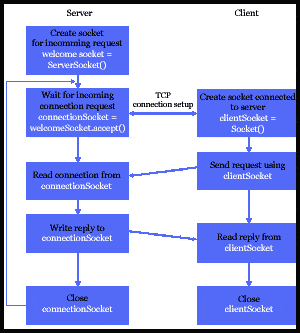Many network applications consist of a pair of programs - a client program and a server program - residing in two different end systems
When these two programs are executed, a client and server process are created, and these processes communicate with each other by reading from and writing to sockets
The socket is the door between the application process and the TCP
Two types of network applications
- An application that is an implementation of a protocol standard
- FTP
- A propriety network application
- A design not found in an RFC






